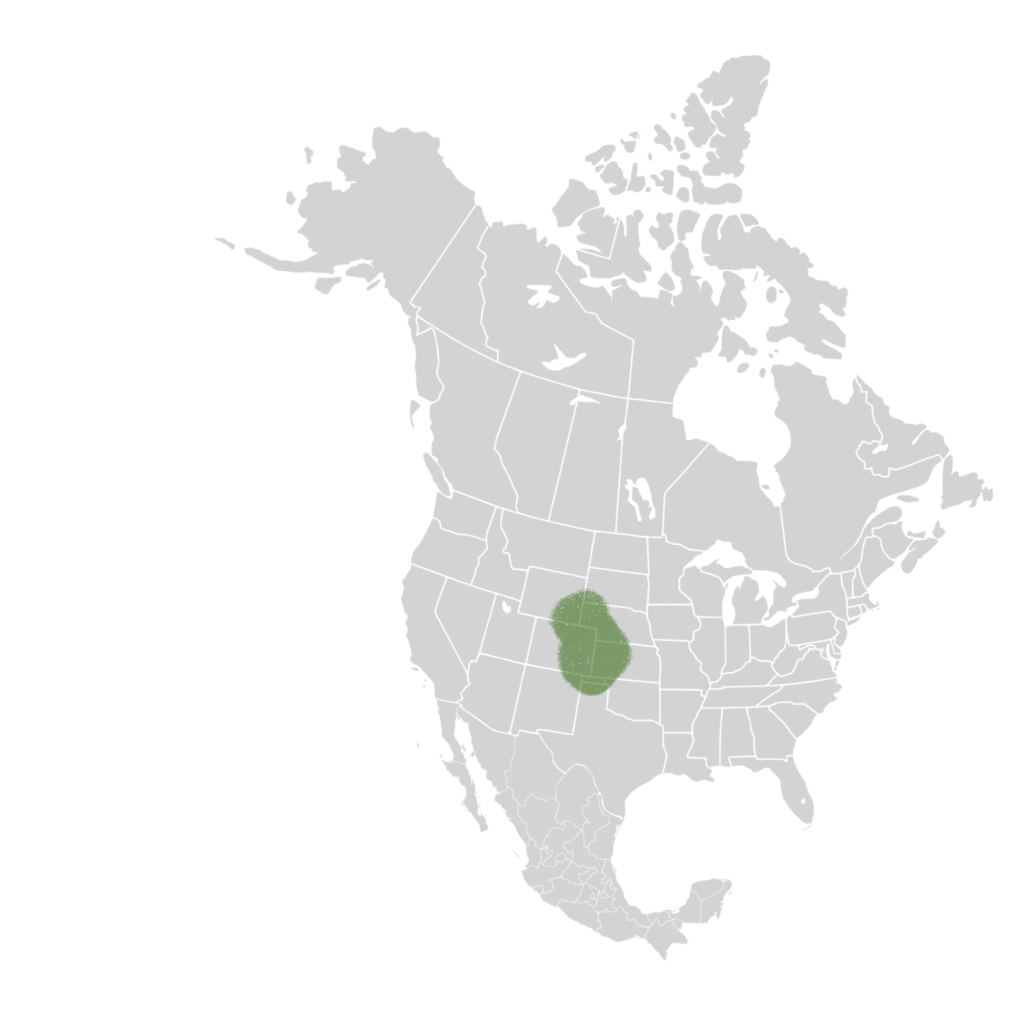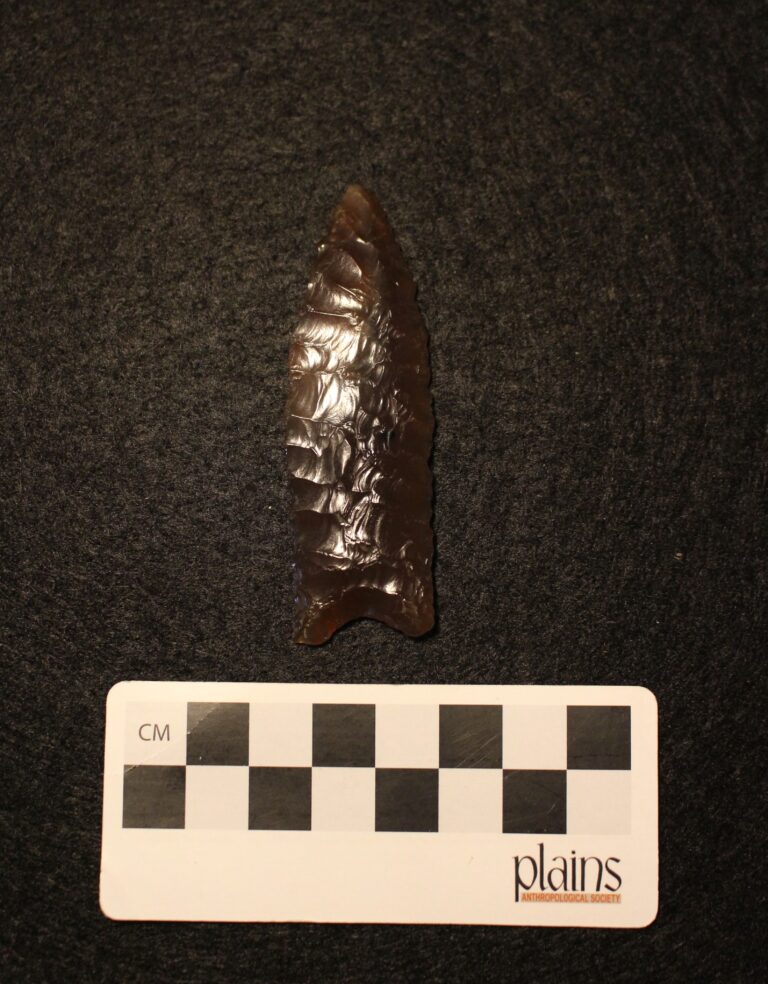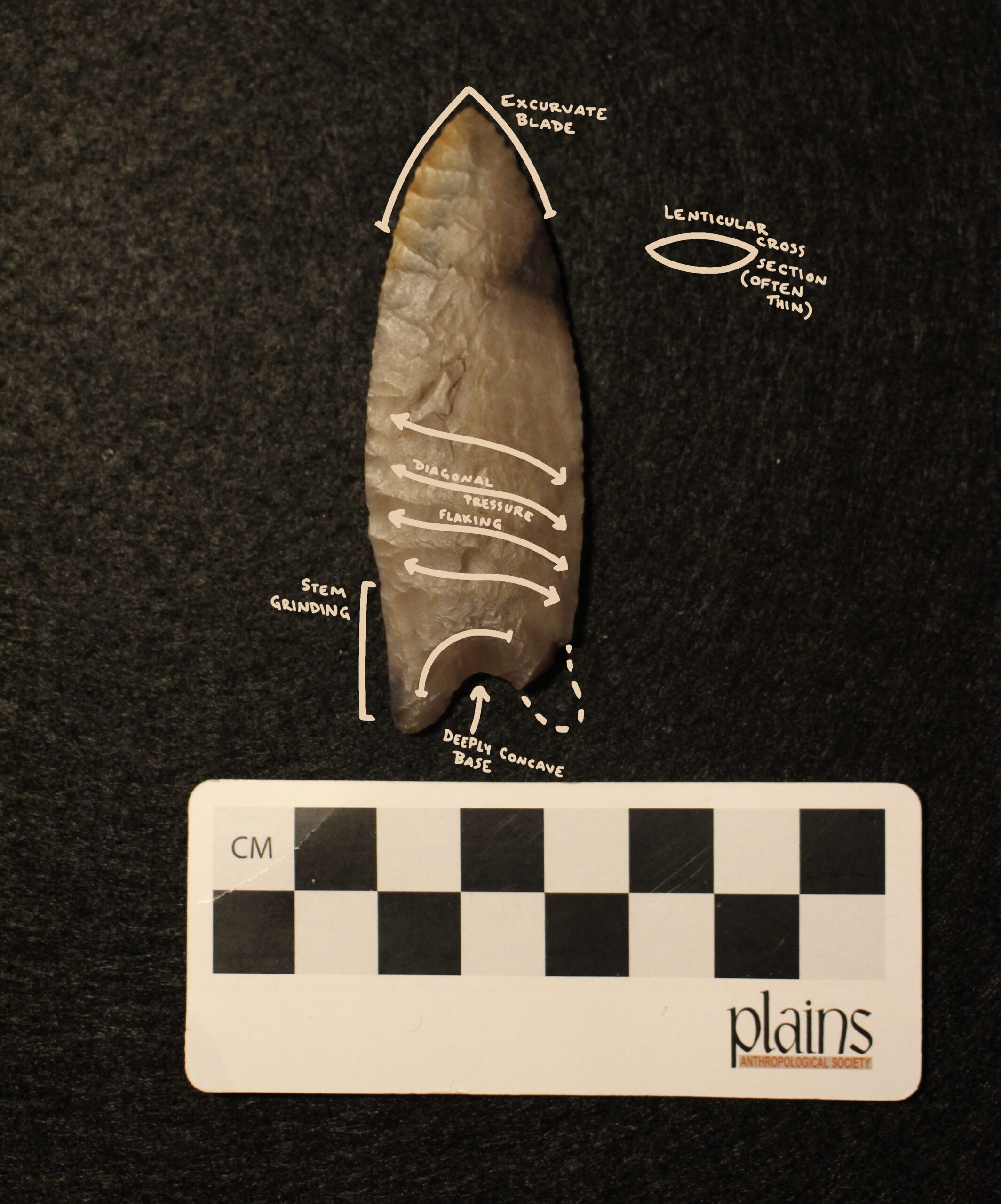Allen
8,500 - 7,500 BP ; [terminal Paleo]
Allen points constitute one of the last Paleolithic cultural complexes. Similar to the climactic fluctuations that affected the Cody complex, the Allen people dealt with a continually changing environment.
It was during this time that Bison Antiquus went extinct. For these groups, that would have been a large change as the next predominant species of bison was Bison Occidentalis which would have been smaller and in lesser numbers. The decline in bison numbers, compiled with degrading environment conditions likely meant more competition among groups on the plains.
Allen Points
Unlike the stemmed Cody complex prior, Allen points return to thinned lanceolate shapes with deep, concave bases. They have diagonal flake scars across their surface
Other points possibly concurrent with Allen are Frederick and Andersen. This website does not have examples of those points, however I still would like to explain some differences. Firstly, the bases should be observed. Allen bases are much more concave, whereas Andersen are completely straight and Frederick are only slightly concave compared to the more extreme Allen. Andersen points are also much more elongated, than the shorter Allen point.
Typology
- Form
- Base
- Horizontal Cross Section
- Vertical Cross Section
- Reduction
- Stem Grinding
- Basal Grinding
- Triangular Lanceolate
- Concave
- Lenticular
- Uniform - assymetrical
- Pressure
- Yes
- Yes
distribution map (great plains)

Notable Sites
- James Allen, Wyoming – Bison kill site. Type site for the Allen complex.
- Scottsbluff, Wyoming – Known for its Cody complex points; however an Allen point was recovered at the same level as the Cody artifacts. Could be indicative of co-complexes.
References cited
Typology and Information:
Taylor, Jeb. Projectile Points of the High Plains: New Perspectives on Typology Based on Examinations of Original Type Site Specimens. 1st ed. Buffalo, Wyo.: Jeb Taylor Artifacts, 2006.


